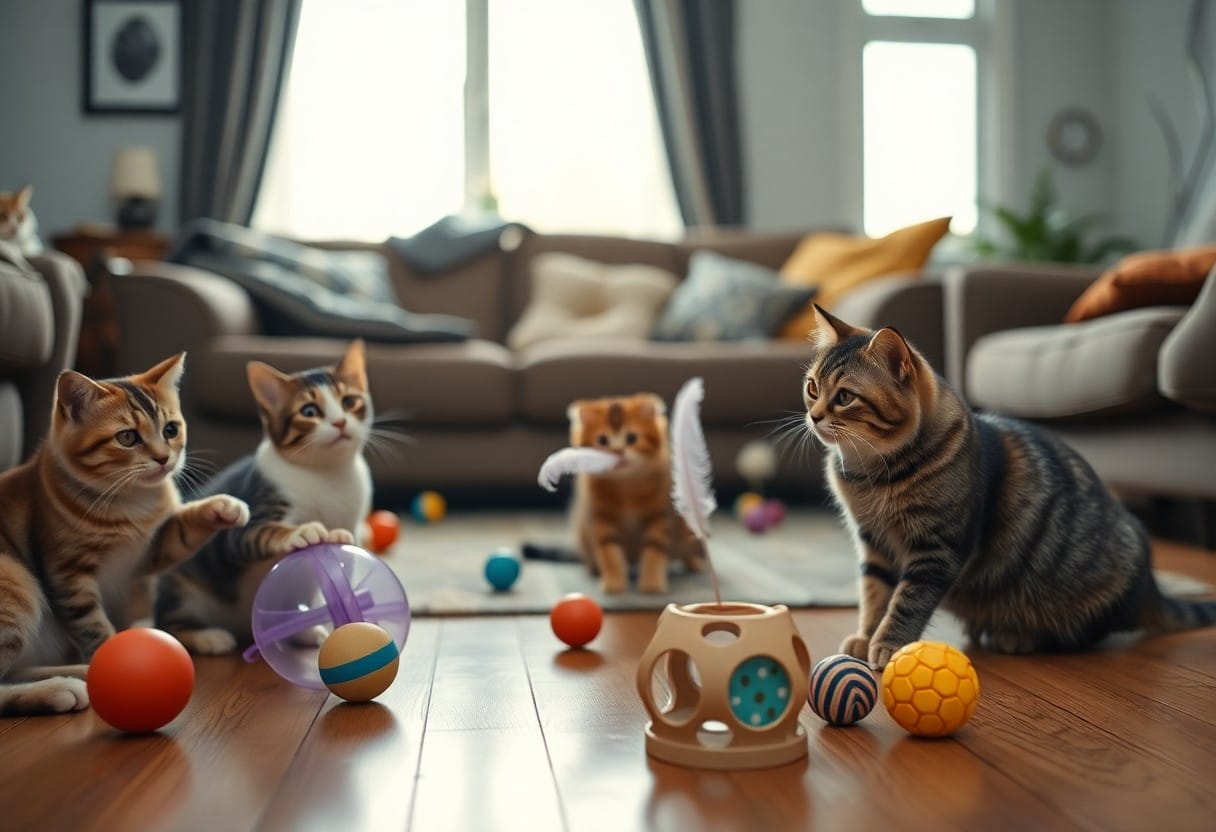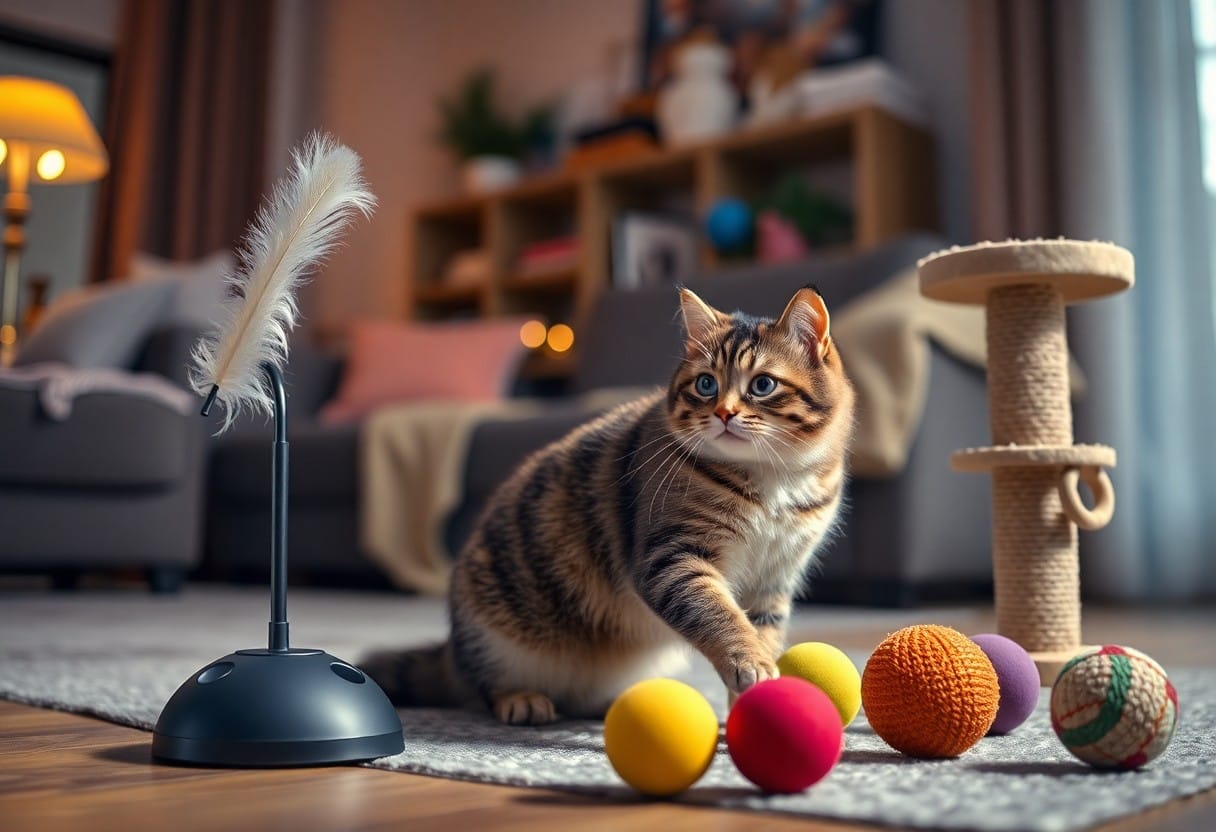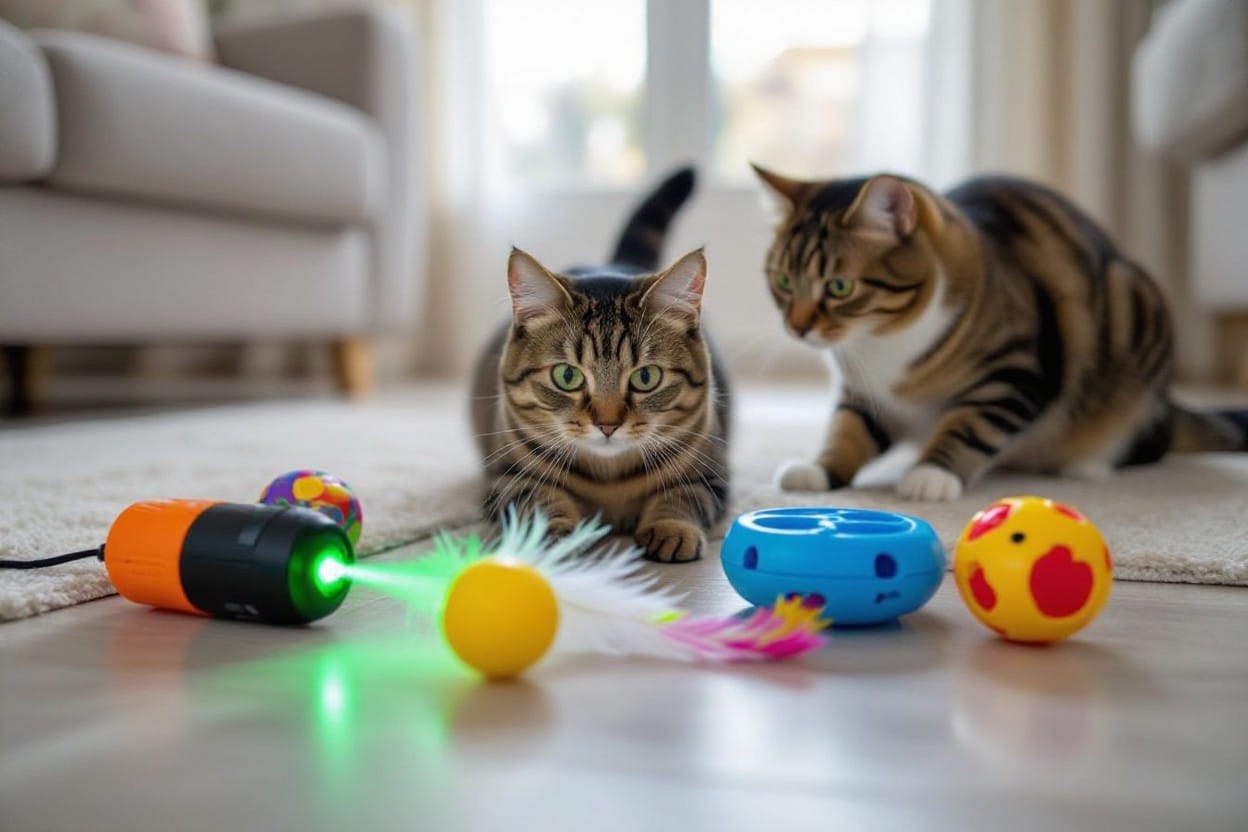With so many cat breeds to choose from, finding the perfect feline companion that fits your lifestyle and preferences can be overwhelming. From playful and energetic breeds to quiet and low-maintenance ones, it’s important to consider various factors before bringing a new cat into your home. By understanding the characteristics and needs of different cat breeds, you can make an informed decision that will ensure a harmonious and happy relationship between you and your furry friend.

Understanding Your Lifestyle
While choosing the right cat breed for your lifestyle, it is crucial to consider various factors that will ensure a harmonious relationship between you and your feline companion. Understanding your lifestyle is the first step in determining the type of cat that will suit your daily routine and activity level.
Assessing Your Daily Routine
On a typical day, take a moment to evaluate your daily routine. Consider factors such as how much time you spend at home, your work schedule, and the amount of time you can dedicate to interacting with your cat. If you have a busy lifestyle with long work hours and frequent travel, you may want to choose a low-maintenance cat breed that is more independent.
Identifying Your Activity Level
On the other hand, if you lead an active lifestyle and enjoy engaging in play and exercise, you may want to consider a more energetic cat breed that can keep up with your energy levels. Some cat breeds are known for being more playful and require plenty of stimulation and interaction to stay happy and healthy.
For example, breeds such as Bengals, Abyssinians, and Siamese cats are known for their high energy levels and love for playtime. These cats thrive in homes where they have ample opportunities to run, jump, and play with interactive toys.
Identifying Your Activity Level
Your activity level will play a significant role in determining the type of cat that will best fit into your lifestyle. If you prefer a laid-back and relaxed environment, a cat breed that is more low-key and enjoys lounging around may be a better match for you. Conversely, if you lead a more active lifestyle and are looking for a cat that can keep up with your pace, a more energetic and playful breed may be the perfect fit.

Key Factors to Consider When Choosing a Cat Breed
Even before bringing a new feline friend into your home, it’s crucial to consider various factors to ensure that you choose the right cat breed that fits well with your lifestyle. By taking the time to understand your needs and preferences, you can make an informed decision that will lead to a fulfilling and harmonious relationship with your new pet.
Space Considerations and Living Environment
An important factor to consider when choosing a cat breed is the amount of space available in your living environment. Some cat breeds, such as the Maine Coon or the Ragdoll, are larger and more active, requiring more room to roam and play. On the other hand, breeds like the British Shorthair or the Scottish Fold are more adaptable to smaller living spaces and do well in apartments or condominiums.
- Consider the size of your home and whether you have access to outdoor space for your cat to explore.
- Think about the activity level of the breed and whether you can provide enough mental and physical stimulation.
Perceiving your living situation and the space available will help you select a cat breed that can thrive in your home environment.
Allergies and Health Concerns
Any discussion about choosing the right cat breed must include considerations for allergies and health concerns. While all cats produce allergens, some breeds are known to shed less dander or produce fewer allergens, making them a better choice for individuals prone to allergies.
Concerns about allergies and health issues should not be taken lightly. It’s imperative to research different cat breeds and consult with a veterinarian to understand the potential risks and necessary precautions before making a decision.
Time Commitment and Care Requirements
An often overlooked factor in selecting a cat breed is the time commitment and care requirements involved in raising a cat. Some breeds, like the Siamese or the Bengal, are more demanding in terms of attention, playtime, and grooming, while others, such as the Persian or the Russian Blue, are more independent and low-maintenance.
The time commitment and care requirements should align with your lifestyle and availability to ensure that you can meet your cat’s needs and provide a loving and nurturing home environment for your new companion.
Overview of Popular Cat Breeds and Their Characteristics
Independent Breeds for Busy Lifestyles
The world of cats offers a variety of breeds that are known for their independent nature, making them great companions for individuals with busy lifestyles. Breeds such as the Siamese, Russian Blue, and Abyssinian are known for their self-sufficiency and low maintenance needs. These cats are content to entertain themselves while you’re away at work or busy with other responsibilities.
Affectionate Breeds for Companionship
With their loving and affectionate nature, breeds like the Ragdoll, Maine Coon, and Scottish Fold are perfect for those seeking a feline companion that craves attention and companionship. These breeds thrive on human interaction and enjoy snuggling up on the couch or following you around the house. They are known for their loyalty and willingness to be involved in all aspects of your daily life.
Plus, these affectionate breeds are known to be great with children and other pets, making them ideal additions to multi-pet households. Their social nature and gentle temperament make them wonderful companions for those looking for a loving and devoted feline friend.
High-Energy Breeds for Active Owners
Popular high-energy breeds such as the Bengal, Sphynx, and Turkish Van are perfect companions for owners with active lifestyles. These breeds are known for their playful and energetic personalities, requiring plenty of mental and physical stimulation to keep them happy and content. Owners of high-energy cat breeds should be prepared for interactive play sessions and engaging activities to help fulfill their cat’s need for stimulation.
Companionship with high-energy breeds can be incredibly rewarding for owners who are willing to invest the time and effort into providing a stimulating environment for their furry friends. These breeds often form strong bonds with their owners and enjoy participating in active playtime, making them ideal companions for those seeking a dynamic and interactive relationship with their cat.
Breed-Specific Health and Grooming Needs
Short-Haired vs Long-Haired Breeds
One of the key factors to consider when choosing a cat breed is the length of their fur. Short-haired breeds such as the Siamese or the Abyssinian require less grooming compared to long-haired breeds like the Persian or the Maine Coon. Short-haired cats usually shed less and may only need a weekly brush to remove loose fur and prevent hairballs. On the other hand, long-haired breeds need regular grooming to prevent matting and tangles, which can lead to skin issues if not properly taken care of.
Preventative Health Measures and Breed Predispositions
Measures to keep your cat healthy include regular veterinary check-ups, vaccinations, and proper nutrition. Different cat breeds may have specific health concerns or predispositions to certain conditions that you should be aware of. For example, some breeds are prone to dental issues, while others may be more susceptible to obesity or heart conditions. Understanding these breed-specific health risks can help you take preventative actions to ensure your cat’s well-being.
Predispositions can include genetic conditions, such as hip dysplasia in certain breeds like the Scottish Fold, or respiratory problems in flat-faced breeds like the Persian. Being aware of these predispositions allows you to monitor your cat’s health more effectively and seek early intervention if needed. Regular grooming, exercise, and maintaining a healthy diet are necessary components of preventative health care for your cat, regardless of their breed.

Behavior and Temperament Matching
Understanding Feline Temperaments
On your quest to find the purr-fect feline companion, it is imperative to understand the different temperaments various cat breeds possess. Some breeds are known to be more independent and aloof, while others are extremely affectionate and crave attention. By researching and understanding these temperamental differences, you can find a cat that aligns with your lifestyle and personality.
Factors such as activity levels, playfulness, and sociability all play a role in a cat’s temperament. For example, if you lead a busy lifestyle and are rarely home, a more independent cat breed may be a better fit for you. On the other hand, if you are looking for a cuddly lap cat to shower you with affection, there are breeds that are known for their loving and social nature.
Social Needs and Compatibility with Other Pets
Feline social needs can vary greatly between breeds, with some cats thriving in multi-pet households while others prefer to be the only furry friend in the home. When considering adding a new cat to your family, it is crucial to take into account your existing pets’ personalities and how they may interact with a new feline addition.
A gradual and supervised introduction process is often recommended when bringing a new cat into a home with other pets. This allows the animals to become acquainted with each other’s scents and presence before full interaction. Some cat breeds are known for their friendly and adaptable nature, making them more likely to get along well with other pets. Understanding the compatibility between different cat breeds and their social needs can help ensure a harmonious multi-pet household.
Financial Considerations
Initial Cost of Cat Ownership
Cost is an important factor to consider when deciding to bring a cat into your home. The initial cost of cat ownership includes expenses such as adoption fees, vaccinations, spaying/neutering, and supplies like a litter box, food bowls, and a bed. These costs can vary depending on the breed of cat you choose and the region you live in. It’s imperative to budget for these initial expenses to ensure you can provide a comfortable and healthy environment for your new feline companion.
Long-Term Economic Commitments
With cat ownership, it’s crucial to consider the long-term economic commitments involved. This includes ongoing costs like food, litter, regular veterinary check-ups, and grooming expenses. Additionally, unforeseen medical emergencies or behavioral issues may arise, requiring additional financial resources. It’s imperative to factor in these long-term commitments before bringing a cat into your home to ensure that you can provide the necessary care throughout your pet’s life.
The long-term economic commitments of owning a cat go beyond just the basic necessities. As your cat ages, you may need to budget for potential health issues that can arise in older cats, such as kidney disease or arthritis. These conditions may require specialized medical care and prescription medications, adding to your long-term financial responsibilities as a pet owner.
How to Find and Adopt the Right Cat
Reputable Breeders vs. Adoption Options
Adopting a cat from a shelter or rescue organization is often the most ethical and rewarding choice. Not only are you giving a homeless cat a second chance at a loving home, but you are also helping to reduce pet overpopulation. Shelters carefully vet cats for temperament and health, ensuring you are adopting a well-adjusted feline companion. Additionally, adoption fees are typically much lower than purchasing a cat from a breeder.
Preparing for a New Feline Family Member
Right before bringing a new cat into your home, it is important to make sure you have all the necessary supplies. This includes food and water bowls, a litter box, scratching posts, toys, and a comfortable bed. Prepare a designated area in your home where the cat can feel safe and adjust to their new surroundings. Introducing a new cat to your existing pets should be done gradually to prevent stress and conflicts.
When preparing for a new feline family member, it is imperative to cat-proof your home by removing any potential hazards. This includes toxic plants, small objects that can be swallowed, and any areas where the cat could get stuck or injured. Providing a stimulating environment with plenty of opportunities for exercise and mental stimulation will help your cat thrive in their new home.
Breeders
When choosing to purchase a cat from a breeder, it is crucial to do thorough research and only work with reputable breeders who prioritize the health and well-being of their animals. Ask for references, visit the breeding facility in person, and inquire about the health screening procedures they follow for their breeding cats. Responsible breeders will be transparent about the genetic history of their cats and provide proper documentation.
Final Words
Ultimately, choosing the right cat breed for your lifestyle is a decision that requires careful consideration. By taking into account factors such as temperament, energy levels, grooming needs, and space requirements, you can ensure a harmonious relationship with your feline companion. It’s important to do thorough research and possibly even consult with a veterinarian or experienced cat breeder to determine which breed will best suit your living situation and preferences.
Remember that each cat breed has its own unique characteristics and traits, so it’s crucial to choose a breed that aligns with your lifestyle and capabilities. By selecting a cat breed that fits well with your daily routine and living environment, you can enjoy a fulfilling and rewarding relationship with your new furry friend for years to come.
FAQ
Q: What factors should I consider when choosing the right cat breed for my lifestyle?
A: When choosing a cat breed, consider factors such as activity level, grooming needs, temperament, and compatibility with your living situation.
Q: How do I know if a specific cat breed will fit into my lifestyle?
A: Researching the traits and characteristics of different cat breeds can help you determine if a specific breed will be a good fit for your lifestyle and preferences.
Q: Are there cat breeds that are more suitable for apartment living?
A: Yes, some cat breeds are better suited for apartment living due to their lower activity levels or adaptability to smaller living spaces. Breeds like the Ragdoll, Scottish Fold, and Russian Blue are known to do well in apartments.
Q: What are some low-maintenance cat breeds for busy individuals?
A: Low-maintenance cat breeds include the British Shorthair, American Shorthair, and Persian. These breeds typically require less grooming and attention compared to others.
Q: How can I ensure that the cat breed I choose will be happy and healthy in my home?
A: Providing proper nutrition, regular veterinary care, mental stimulation, and a safe environment are key factors in ensuring the happiness and health of any cat breed in your home.















